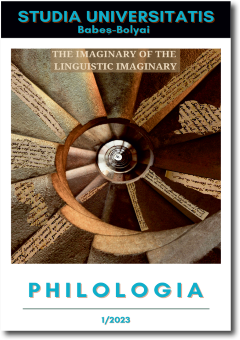LINGUISTIC CONCEPTUALIZATION OF SPATIAL PREPOSITIONS: ROMANIAN ʺÎNʺ AND POLISH ʺWʺ ‒ A COMPARATIVE APPROACH
LINGUISTIC CONCEPTUALIZATION OF SPATIAL PREPOSITIONS: ROMANIAN ʺÎNʺ AND POLISH ʺWʺ ‒ A COMPARATIVE APPROACH
Author(s): Anna OczkoSubject(s): Foreign languages learning, Theoretical Linguistics, Applied Linguistics, Cognitive linguistics
Published by: Studia Universitatis Babes-Bolyai
Keywords: prepositions; Romanian as a Foreign Language; linguistic conceptualization; prepositional structures; polish language;
Summary/Abstract: Linguistic Conceptualization of Spatial Prepositions: Romanian “în” and Polish “w” – Comparative Approach. The Romanian preposition "în" corresponds to the Polish preposition "w". Both express the spatial relationship that consists of placing an object in a limited space; they indicate the interior of the space where something is located. In addition to this general definition in both languages, the preposition acquires other semantic functions that may be convergent, rendered directly by the pair Rom. în = Pol. w. Furthermore, representation of some linguistic relations can be different: for a Romanian speaker, the space relation could be reflected by preposition representing a closed space – în, but for a Polish speaker, it reflects an open space or a surface coralated to the Polish preposition – na. The main objective of this article is to analyze the differences that, first, result from the distinctive conceptualization of space reflected in the language using prepositions and, secondly, result from heterogenous grammatical system (Roman vs. Slavic). The analysis is based, among other things, on the frequent mistakes in the use of prepositional structures that Polish speakers make when learning Romanian. The wrong structures appear especially at the level of abstract language, in phrases or verbs, when the regime imposes prepositions or cases that do not correspond functionally to the native ones; however, the linguistic image of the space is also different and difficult to identify in the metaphorical or abstract structures. The cognitive approach allows the delineation of some image schemes that represent the core meaning of the preposition. The comparative study of the preposition in the Romanian and Polish languages shows that the prepositional system in the Romanian language is more developed and richer than the Polish one, and the latter presents a much stronger and more direct attachment to the feature of "interiority" expressed by the preposition "w / în" than in the Romanian language.
Journal: Studia Universitatis Babes-Bolyai - Philologia
- Issue Year: 68/2023
- Issue No: 1
- Page Range: 91-105
- Page Count: 15
- Language: English

